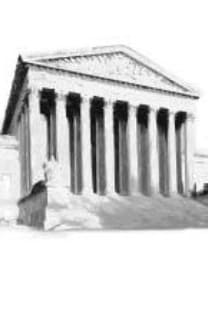Can Fiction Offer Moral Truth Beyond Truisms?
Öz
This paper challenges Jerome Stolnitz’s view that art cannot teach us anything but merely offers truisms, which he asserts in his article “On the Cognitive Triviality of Art”. The current inquiry is limited to fiction and explores the relationship between aesthetics and morality and their cognitive and emotional implications. Employing the contemporary debates surrounding the literature, I defend the view that fiction can offer us moral truth beyond truisms through the reader’s interaction with the text as she employs her imaginative, moral and emotional faculties throughout the unique process of reading.Stolnitz’s first worry is that the cognitive value of fiction is superficial, and the “message” of a text hardly qualifies as knowledge. He bases his argument on the case that artistic truth doesn’t exist because there are no experts who could judge the epistemic status of knowledge on arts; hence there is no such thing as artistic knowledge – and without knowledge, art cannot teach us anything. Even if fiction offers certain conceptions which may evoke moral wisdom, they are already stale truisms devoid of cognitive worth. I respond to this criticism by proposing that works of fiction contain a different type of knowledge; the type of know-how rather than know-that which alludes to moral knowledge.Stolnitz’s second worry is that the moral themes contained in fiction can fit in a sentence or two, without us having to bother to read the whole text. My response is that the act of interaction with the text is an indispensable part of enhancing our emotional and moral education which helps us cultivate our moral imagination. Similar to any thought experiment in philosophical arguments, fiction helps us direct our moral attention and evaluate diverse (moral) possibilities. The process of reading allows us to acquire a moral space or distance from which we can formulate moral responses to what happens in the text. Cultivating moral judgment takes time; and it is this time consuming act of reading the text which enables us to critically engage with the text. Learning from fiction entails an internal change we undergo in our being; and the greater the literary work is, the more we can learn from it.
Anahtar Kelimeler:
Fiction, Artistic Truth, Aesthetics, Moral Knowledge, Moral Cognition, Moral Imagination
___
CARROLL, Noel (1998). “Art, Narrative and Moral Understanding”, Aesthetics and Ethics: Essays in the Intersection, (ed.) Jerrold Levinson, pp. 126-160, Cambridge: Cambridge University Press.CONOLLY, Oliver and Bashar HAYDAR (2001). “Narrative Art and Moral Understanding”, British Journal of Aesthetics, 41(2):109-124.
DIFFEY, Terence J (1995). “What Can We Learn From Art?”, Australasian Journal of Philosophy, 73(2):204-211.
GRAHAM, Gordon (1995). “Learning from Art”, British Journal of Aesthetics, 35(1):26-37.
LAMARQUE, Peter and Stein H. OLSEN (1997). “The Mimetic Aspect of Literature”, Truth, Fiction and Literature, pp. 398-439 Oxford: Clarendon Press.
MC CORMICK, Peter (1983). “Moral Knowledge and Fiction”, The Journal of Aesthetics and Art Criticism, 41(4):399-410.
MC GINN, Colin (1997). “Beauty of Soul”, Ethics, Evil and Fiction, pp. 92-122, Oxford: Clarendon Press.
MEW, Peter (1973). “Facts in Fiction”, The Journal of Aesthetics and Art Criticism, 31(3):329-337.
NUSSBAUM, Martha (1985). “’Finely Aware and Richly Responsible’: Moral Attention and the Moral Task of Literature”, The Journal of Philosophy, 82:516-529.
ROBINSON, Jenefer (1995). “L’Education Sentimantale”, Australasian Journal of Philosophy, 73(2):212-226.
SHARPE, R. A (1992). “Moral Tales”, Philosophy, 67(260):155-168.
STOCK, Kathleen (2007). “Fiction and Psychological Insight”, Knowing Art: Essays in Aesthetics and Epistemology. (eds.) Matthew Kieran and Dominic Lopes pp. 51-66, The Netherlands: Springer.
STOLNITZ, Jerome (1992). “On the Cognitive Triviality of Art”, British Journal of Aesthetic, 32(3):191-200.
- Yayın Aralığı: Yılda 2 Sayı
- Yayıncı: Bursa Uludağ Üniversitesi
Sayıdaki Diğer Makaleler
Michael Walzer ve Komüniteryen Bireycilik
Requiem for the Ones Experiencing the Tragedy of Farewells: The Ballad of Narayama
Metafiziğin Sonunda Dostluk: Heidegger Üzerine Bir İnceleme
Levinas’ta Aşkınlık Düşüncesine Giriş
Giorgio Agamben: Mesihçi Bir Siyaset Felsefesinde Kutsal İnsan ve İstisna
Kültürün Felsefi Eleştirisi Olarak Kültür Eleştirisi
An Antihumanist Reinterpretation of the Philosophy of Singularity
John Rawls’un Siyasal Liberalizmi ve Hoşgörü Üzerine
A Discourse on the Ontology of Violence
Noam Chomsky’de Üretici Dilbilgisi: Derin Yapı ve Yüzey Yapı Ayrımı
